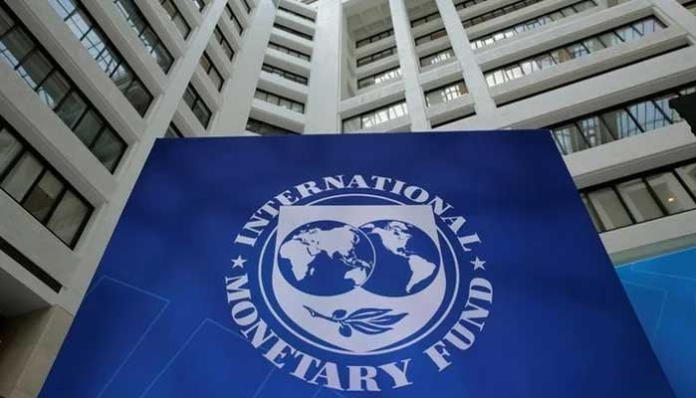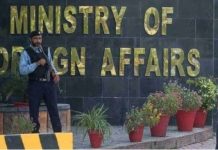ISLAMABAD, May 19 (DNA): Pakistan’s external financing gap is expected to soar to $31.4 billion by the fiscal year 2027-28, according to projections by the International Monetary Fund (IMF), following the conclusion of current programmes supported by the lender.
The IMF staff report believes that there will be zero privatisation receipts until 2030, as the projection tables shown by the Washington-based lender show zero amount.
According to the projections made by the IMF in the staff report after the completion of first review and the release of second tranche under $7 billion Extended Fund Facility (EFF) and approving fresh Resilience Sustainability Facility (RSF), Pakistan’s external financing gap would be standing at $19.75 billion in the next budget for 2025-26 and would come around $19.35 billion in fiscal year 2026-27. However, Pakistan’s external financing gap will go up to $31.351 billion by 2027-28.
“It will be a challenge for the Government of Pakistan to manage external financing gap of $31.4 billion by 2027-28 without securing another IMF loan,” said official sources, indicating that the government had shown its intentions to consider the existing EFF programme as the last loan from the IMF. The IMF has projected the external financing gap ranging around $23.13 billion in 2028-29 and $22.16 billion in 2029-30.
The IMF has also projected that the country’s gross foreign reserves would be standing at $23 billion by 2027-28, so it will become an acute challenge for meeting the financing gap of over $31 billion in the same year of 2027-28.
On exports, the IMF has projected the country’s exports of $32.9 billion in 2025-26, $35.9 billion in 2026-27, and $38.59 billion in 2027-28.
The imports projection hovers around $59.9 billion in 2025-26, $63.1 billion in 2026-27 and $67.13 billion in 2027-28. The Current Account Deficit is projected to remain at around $1.48 billion to $3.85 billion over the coming years till 2027-28.
The IMF also projected that the workers’ remittances from abroad would largely remain in the same bracket of $36 billion over three-year period till 2027-28.
Independent economists wondered how the government would say goodbye to the IMF after completion of the ongoing EFF/RSF programme. Something fundamental will have to be changed to increase non-debt-creating dollar inflows in the coming years to break free from IMF’s grip.
The IMF-sponsored programme, they said, would only maintain the status quo as over a year’s period the country will be able to clinch the GDP growth up to only 4.5% by 2027-28, leaving more people in the clutches of poverty.
Despite paying a heavy cost in terms of increased taxation and curtailing expenditures, there will be no drastic change in Pakistan’s economy as projected by the IMF in its staff report.
Meanwhile, Pakistan has agreed to implement 13 conditions to fulfil IMF conditions under RSF. The IMF staff report stated Pakistan agreed to adopt, as part of FY26 budget law, a revenue-neutral scheme, including a subsidy for Electric Vehicles (EVs), and a supplementary tax on Internal Combustion Engine Vehicles, in line with New Energy Vehicle Policy 2025-2030.
It agreed with the IMF that the budgeted electricity tariff differential subsidy and cross subsidy system be replaced with targeted subsidy framework for low-income consumers, with BISP disbursements through new system by end-January 2027.
It agreed better-targeted and more progressive subsidies leads to reduced incentive to overconsume electricity among higher-income consumers; reduced pressure from industry to deliver lower tariffs that do not align tariffs with cost and lead to wasted power; reduced incentive for theft among lower-income consumers and thus lower energy losses.
The PPRA will have adoption of new regulation by December-end, mandating certain new electric appliances (fans, LEDs, refrigerators, air conditioners and motors) procured at federal and provincial level are MEPS-compliant; achievement of new appliances entering the market for sale as MEPS-compliant (40% fans; 30% LEDs; 35% refrigerators; 30% air conditioners; 25% motors) by June-end, 2027.
Pakistan agreed to increase climate change (adaptation and mitigation) weighting in Public Investment Procedures and Parameters methodology to at least 30% for infrastructure projects, develop explicit protocols for scoring projects against criteria and publish selection process and distribution of scores for new projects entering PSDP.
Pakistan agreed to revise PSDP call circular such that, for all new major infrastructure projects (greater than Rs7.5bn), only projects that have undertaken climate vulnerability, adaptation, and mitigation screening will be included in the budget.
Both sides agreed to expand federal climate budget-tagging framework to include expenditure on grants and subsidies and extend budget tagging to expenditure by the provinces.
In the context of National Disaster Risk Financing Strategy, IMF’s condition is to adopt an implementation framework that encompasses federal and provincial disaster risk financing needs.
The SBP is bound for issuance and adoption of guidelines for implementation of climate-related financial risk management by supervised commercial banks in line with 2022 BCBS principles.
The Ministry of Finance will adopt a green finance taxonomy adapted to Pakistan’s updated NDC.
Pakistan agreed with IMF to adopt a supplementary carbon levy via PDL on gasoline and diesel of Rs5 per litre, phased in over two years; add fuel oil to PDL, with the base and supplementary rate applicable, adopt a PPP-viability gap funding framework that provides one-off subsidies to incentivise private sector investment in EV charging stations.
It also agreed to ensure an open bidding process and include clear criteria to evaluate eligibility of projects for gap funding and implement the first bid window in line with Fund recommendations.
The IMF has asked Pakistan to enforce the e-Abiana system in Punjab and expand it to other provinces to improve irrigation water pricing and revenue collection. In its staff report released on Saturday after the completion of the first review, the Fund said that this initiative would also help strengthen water management and make the use of scarce water resources more efficient.
According to top officials in the Water Resources Ministry, there are estimates that revenue of Rs300-325 billion could be earned by the four federating units, and it could be utilised to upgrade respective irrigation systems and finance future national water projects such as dams.
Meanwhile, the IMF has asked the government to finalise Integrated Energy Plan (IEP) by June-end. Prime Minister Shehbaz Sharif is being given a presentation tomorrow (May 20) on Integrated Energy Plan with an emphasis not to approve any summary of Power Division (PD) without input of Petroleum Division and vice versa.

















